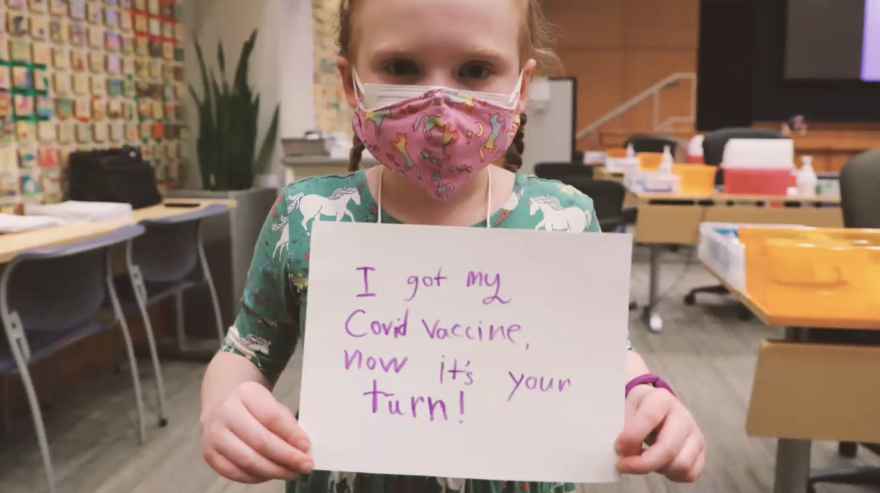The leader of Ohio's health department said the state is preparing to accept the first shipment of new vaccines and administer them for younger children as soon as it gains federal approval.
There hasn't been a COVID-19 vaccine available for children below the age of five, but it appears the federal agency that oversees vaccines might soon give approval to a new shot developed by two different drug companies.
Ohio Department of Health Director Dr. Bruce Vanderhoff said while it's true younger kids have not been hit as hard with COVID-19 as older adults, it is important to remember some children between six months and five years have gotten very ill.
“In Ohio, 79,000 cases have been reported in this age group with about 1,500 hospitalizations and tragically, ten deaths,” Vanderhoff said.
Vanderhoff said the vaccines for that age group might be arriving in Ohio as soon as Monday. When the shipment arrives, Vanderhoff said the agency will get those out to providers immediately. Which means the vaccine could be available as soon as the middle of next week in pediatrician offices. Family doctors and health clinics will also have the vaccines.
Vanderhoff said there will be two options of COVID-19 vaccines available.
"The Pfizer vaccine for this age group is a three-shot series. The second dose can be taken three weeks after the first and the third dose two months after the second. Each dose contains one-tenth the amount of vaccine given in the adult dose. The Moderna vaccine is a two-shot series and the second dose can be administered at least four weeks after the first. Each dose contains one-fourth of the adult dose," Vanderhoff explained.
There's another reason doctors cited that it's important to get these younger kids vaccinated against COVID-19. Dr. Grant Paulsen, with Cincinnati Children's Hospital, said unlike older children or adults, very young children don't have the option of the many therapeutics that are available.
"A child under the age of 12, certainly these younger children, they are not approved and we are not able to give them the oral medicine which is Paxlovid, we are not approved or able to give them intravenous antibody either. The only treatment option for those young children is an IV infusion that is once a day for between three to five days or longer if they are critically ill," Paulsen said.
At this point, less than two-thirds of eligible Ohioans have received at least one COVID-19 vaccine and younger Ohioans are less likely to be vaccinated.
Vanderhoff said it's important for all eligible Ohioans to get vaccinated, even those who have had COVID-19 in the past. He said people who have had COVID-19 and received vaccines have what's known as hybrid immunity. He said medical experts agree that is the best immunity a person can have to fight the virus.
At this point, the Ohio Department of Health reports 2,789,900 cases of COVID-19 have been confirmed in Ohio and nearly 39,000 Ohioans have died from the illness.
Copyright 2022 The Statehouse News Bureau. To see more, visit The Statehouse News Bureau. 9(MDAxMzY2MjQ0MDEyMzcyMDQ5MzBhZWU5NA001))



